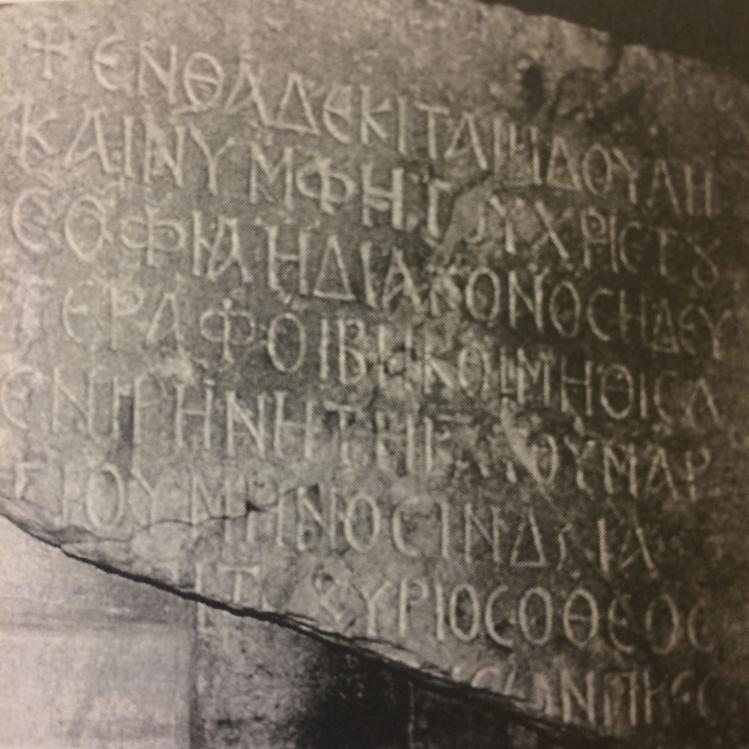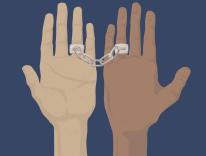
Some years ago I handed out a syllabus that included a book titled Ordained Women in the Early Church: A Documentary History. One student quipped derisively, “Must be a very short book.”
It isn’t.
The student was under the false assumption that “ordained” only meant priest. And indeed, the documentary history of women presbyters or priests in the early church would make for a very short book. But the documentation of women deacons from the first few centuries of Christianity is relatively abundant. The basic facts have been recently rehearsed by many scholars, such as Phyllis Zagano, an American member of the recently appointed Vatican commission to study the diaconate of women.
Those not predisposed to support women deacons in the present day often consider the initiative to be a recent, feminist, perhaps postmodern quest, an innovation unmoored from historical tradition. What often goes unnoticed in the discussion about women deacons, though, is how much of the ancient evidence comes from concrete archaeological discoveries.
Advocates are not reading between the lines of history, creating things that aren’t there in the plain sense of some text. They’re not looking under every proverbial rock in hopes of finding a meager piece of evidence. No, the evidence for women deacons is on the literal rocks themselves, carved in marble or limestone, on chancel screens or tombstones.
Kevin Madigan and Carolyn Osiek’s admirable book catalogs 65 inscriptions, as of its publication date in 2005. The vast majority of these come from eastern Christian communities (Greece, Asia Minor, the Holy Land, Syria, etc.), while only a few come from Rome, Gaul, or North Africa. Yet the geographical breadth of the findspots (from modern-day France all the way to Syria) suggests that the diaconate of women was, while concentrated in the Christian East, not merely a regional peculiarity.
A compelling example is the stone pictured above, found by workers at the Mount of Olives in Jerusalem on December 8, 1903. Probably dating from the fourth century, the Greek translates as “Here lies the slave and bride of Christ, Sophia, the deacon, the second Phoebe, who fell asleep in peace on March 21st during the 11th indiction…” The inscription’s subsequent lines are broken or missing, which is especially unfortunate because line 8 likely names a presbyter (pres-) that may have helped us to date and situate the artifact.
Inscriptions can be ambiguous in their meaning, of course, just like texts transmitted through tradition can be. But the prevalence of such inscriptions nonetheless matters for several reasons. First, the ancient materiality of the objects necessitates a kind of distance from present-day motives. A critic of the contemporary push for women deacons cannot both champion fidelity to Christian historical tradition and cavalierly dismiss these clear realia of Christian lives. Second, inscriptions were the primary public texts of the ancient Mediterranean world. They communicated values and priorities of communities. The prevalence of these inscriptions demonstrates that women’s ordained leadership was not secretive or embarrassing. To the contrary, and this may be the most important point, many of the inscriptions display reverence for the female deacon named therein—after all, giving honor was the primary function of inscriptions.
Occasionally an inscription can even help us to advance our knowledge about a crucial argument. For example, the oldest use of the word “deacon” for a Christian woman comes in Romans 16:1, when Paul commends Phoebe, a diakonos of the church of Cenchreae (near Corinth). Scholars debate whether this was an “office” or merely a word for servant, with both sides marshalling evidence to make a case.
But from out of the ground, the Mount of Olives inscription also offers a comment on this debate, telling us that in the Holy Land of the fourth century—certainly a significant time and place for the Christian tradition—a real deacon named Sophia was acclaimed precisely by connection to her predecessor Phoebe. For the Christians who commissioned this public monument, the honorable status of women as deacons was set in stone.
Please email comments to [email protected] and join the conversation on our Facebook page.
Share
Previous Story
Campus Speech Update
Next Story
Nobody's Fault
